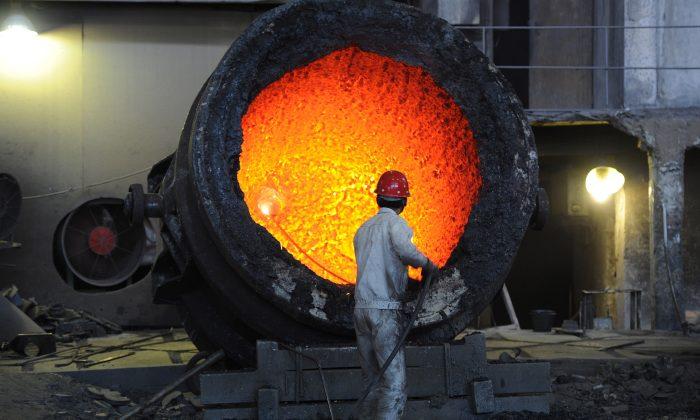As the New Year approached on Jan. 31, all Chinese companies and banks were busy collecting debts and paying debts. China’s economy is facing a number of problems, including a money shortage and soaring local debt. According to experts this may trigger another wave of bankruptcies among private enterprises.
Nearly 98 percent of private companies in Wenzhou City, China’s eastern private enterprise hub, have “hubao,” or mutual guarantee, loans—a form of joint responsibility loan that lowers the bar for private companies to get money from banks or other financial institutions. However, when the money supply is tight, one sinking boat could pull down several others.
Chen Yixin, the Communist Party chief of Wenzhou City commented that “hubao” is a very difficult problem for the local economic development, and the performance of the local financial sector in December is a critical index.
“If the financial sector can endure, Wenzhou’s economy in 2014 will be stable; if problems come up, there will be a chain reaction,” said Chen.
Li Chengwen, chairman of the China Fato Group, was quoted in a National Business Daily report as saying that the possibility of a wave of bankruptcies as happened in China in 2011 cannot be ruled out.
According to Chinese media reports, provincial level bank presidents of China’s four major banks in Zhejiang Province went to Wenzhou recently to investigate the bad debt situation. They feared that privately owned factory bosses may escape with the money they borrowed from banks, as happened in 2011.
Five Major Challenges
On Dec. 25, Chinanews.com published an economic review titled “Year End Economic Observation: Chinese Economy Facing Five Challenges.”
The article quoted Lu Zhengwei, chief economist from China Industrial Bank, as saying that the first challenge is the economic slow-down, which is in a state of a “soft bounce-back, possibly slipping back into recession.” How to balance stability and reform is the big challenge for China’s economy in 2014, Lu said.
The second challenge is the conflict between population growth and the weak agriculture sector. According to forecasts, China’s population will reach 1.4 billion in 2020. Thus, the demand for food and agricultural products will continue to rise. However, the foundation to support stable production growth is very weak. Over 50 percent of medium and small-scale irrigation facilities or irrigation projects in China either do not match the demand or need replacement, and over one third of agricultural machinery needs repair or rebuilding.
The third challenge is the high M2 money supply and money shortage coinciding. Although China’s M2 supply has exceeded 10 trillion yuan (US$1.65 trillion), money shortages still come up from time to time, and this could lead to another round of credit crunch with inter-bank lending rates continuously rising.
The fourth challenge is how to manage debt risk during the progress of medium and small-scale city construction projects.
The fifth challenge is the conflict between manufacturing overcapacity and the demand for more jobs. The overcapacity problem for low-grade steel, aluminum, cement, flat glass, and shipbuilding is getting worse.
When these obsolete industries are phased out, it reduces the outlook for job growth. This is a big problem as 2014 may see the largest number of university graduates looking for jobs.
Translated by Tan Hohwa. Written in English by Gisela Sommer.

Friends Read Free